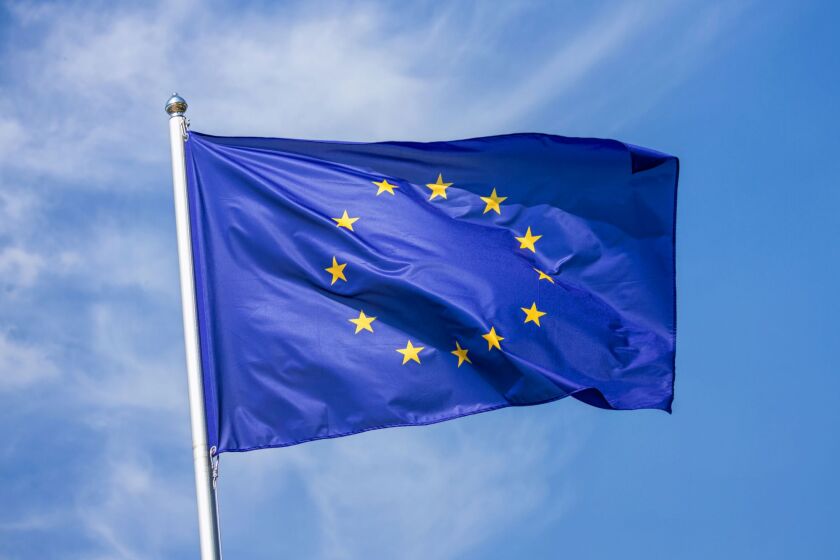In recent years, the trend in competition and M&A regulation has been firmly angled towards greater oversight and protectionism. The EU Foreign Subsidies Regulation, expected to go live next year, is the next piece of legislation to follow this trend.
The regulation, which is intended to level the playing fields in EU’s markets, expands on the EU State Aid Regulation by providing guidelines and rules for firms that receive a subsidy from a non-EU government. While many have viewed this as a very positive step, the broad-ranging powers given to the Commission in the regulation are expected to create significant legal uncertainty for firms in scope.
“There’s distortion in the markets created by companies that receive subsidies from their own government and then come to Europe for M&A activity or to bid for a public contract and distort the level playing field in Europe,” said Genevra Forwood, partner at White & Case. “The Foreign Subsidies Regulation will complete the European Commission’s regulatory toolbox and allow them to address this.”
What deals will it impact?
The regulation requires a notification in three circumstances. The first is as part of M&A transactions where the target firm has a turnover in the EU of more than €500 million ($499 million) and there was a financial contribution to the target or acquirer of more than €5 million ($49.87 million). The second circumstance is in public procurement deals.
Unlike the first two, the third circumstance where the law can be applied is not triggered by an event but, under an ex officio tool, the Commission is able to investigate any firms and deals which have received such contributions. Together, the three circumstances mean that the EU will have far-reaching power in applying the law.
“Companies in scope are primarily those looking to invest and operate in Europe,” said White & Case’s Forwood. “Because the rules are pretty broad, investors from any non-EU country could be looking at scrutiny under these rules.”
Once the regulation is live, deal participants will be required to notify any form of foreign contribution from a non-EU government above the threshold. These contributions could include loans, guarantees, investment such as through sovereign funds and tax cuts given to a firm in the last three years. Many firms are likely to be caught under this because of Covid grants and loans will also apply.
“A lot of the filings will be technical ones because the thresholds are triggered by financial contributions rather than subsidies,” said Natura Gracia, partner at Linklaters. “Therefore we expect there’ll be a lot of filings for deals that aren’t at risk, but dealmakers will still have to go through the process.”
See also: Illumina/Grail ruling creates another regulatory hurdle for dealmakers
Challenges: broad brush
This far-reaching approach is expected to pose challenges for compliance teams and dealmakers.
“A key concern is that the definition for a foreign subsidy has been left purposefully broad,” said a London-based lawyer. “As it stands, the definition is capable of capturing a variety of financial payments or advantages and it’s not yet clear how the Commission will choose to apply it.”
The Commission has said it will issue further guidance on this in the first 12 months of using the regulation, however market participants do not expect this to solve concerns around legal certainty.
“I think the EU wanted to keep the definition flexible so that the Commission can interpret it for each case,” said Linklaters’ Gracia. “The regulation requires the Commission to issue guidance which is important because of the high level of concern in the market. But I don't think that this guidance will necessarily be specific to the point that people shouldn’t worry about it anymore.”
This could be even more of a difficulty for firms when the regulation’s ex officio tool is used, which is expected to be given just as much attention by regulators as the notification reviews.
“The commissioner reserves the right to intervene and to investigate any distortive foreign subsidy in any other market situation,” said Morris Schonberg, senior associate at Herbert Smith Freehills who specialises in EU State Aid regulation. “According to its proposals, the Commission seems to view this power to investigate as just as significant as the side handling notifications. This raises important questions of how exactly the Commission will use it and how they will pick and choose cases to investigate.”
See also: Inflation, interest rates replace sanctions as key factors pushing down global M&A
Challenges: piling regulation
A further concern is how this regulation fits within the broader picture. For most firms that have to issue filings under the regulation, it’s very likely that they’ll be within scope of other competition and national security rules.
“The Foreign Subsidies Regulation introduces further procedural complexity,” said Daniel Vowden, partner at Herbert Smith Freehills in Brussels. “Businesses are keenly aware of the increase in legal uncertainty and regulatory risk that’s come with this.”
There are also concerns that the regulation could impact different countries in the bloc differently as some rely on foreign investment more than others. As this kind of approach to subsidies is unique to the EU, there are concerns that it could put potential investors off the region.
“Given the present geo-political developments it might be ambiguous to determine the regulation’s real impact,” said Brian Camilleri, chief officer for economic intelligence, research and EU affairs at the Malta Enterprise. “The move to ensure a level playing field together with more transparency is well received and this could actually lead to higher investment inflows towards the EU. The critical aspect will be how this regulation will be implemented.”
A key concern for some was the insertion of a 10-year retrospectivity clause.
“A retrospectivity clause could send the wrong message to non-EU investors,” continued Camilleri. “During this time of high uncertainty and market volatility, the EU should not be adding any further uncertainties through the adoption of policies that could be back dated.”
See also: SPAC rule change raises cross-border questions
How should firms prepare for the regulation?
Before the regulation goes live next year, firms can start thinking about how to address it so that there is less at risk when a notification is required or when a concern arises through the ex officio tool.
“Firms should do an assessment of any financial contributions that they have received from non-EU governments in the last three years,” said Linklaters’ Gracia. “Once companies have identified those contributions, the next step is considering if they are subsidies and, if they are, thinking about the arguments you could put forward to say that they are either not distortive of the EU internal market or any distortions are outweighed by the possible benefits.”
This will be an important factor when firms look to future M&A activity and think about due diligence on the companies. Others agreed that preparing for the requirements now will help in the future.
“This is a new area of reporting for businesses, so firms should start to think about how to set up the infrastructure and processes to review any contributions and prepare for potential scrutiny on them,” said Monica Gogna, head of financial regulation UK at EY Law. “They should also look at preparing fairness opinions. This could involve getting an independent expert report or looking at investment guidelines for sovereign bonds.”
It will be key for firms not to view this as a standalone regulation, but as one among many regulations around transactions which intertwine.
“Anyone looking at the impact of this particular regulation must consider the rest of it [FDI, state aid and merger control],” she continued. “There may be areas where the two overlap on the information required.”
Viewing this as one of a series of regulations was a key theme for market participants who highlighted the rapidly shifting regulatory landscape.
“I'm not sure that at any point in my career I've experienced a period of such radical and transformative change in the antitrust field,” said Herbert Smith Freehills’ Vowden.

